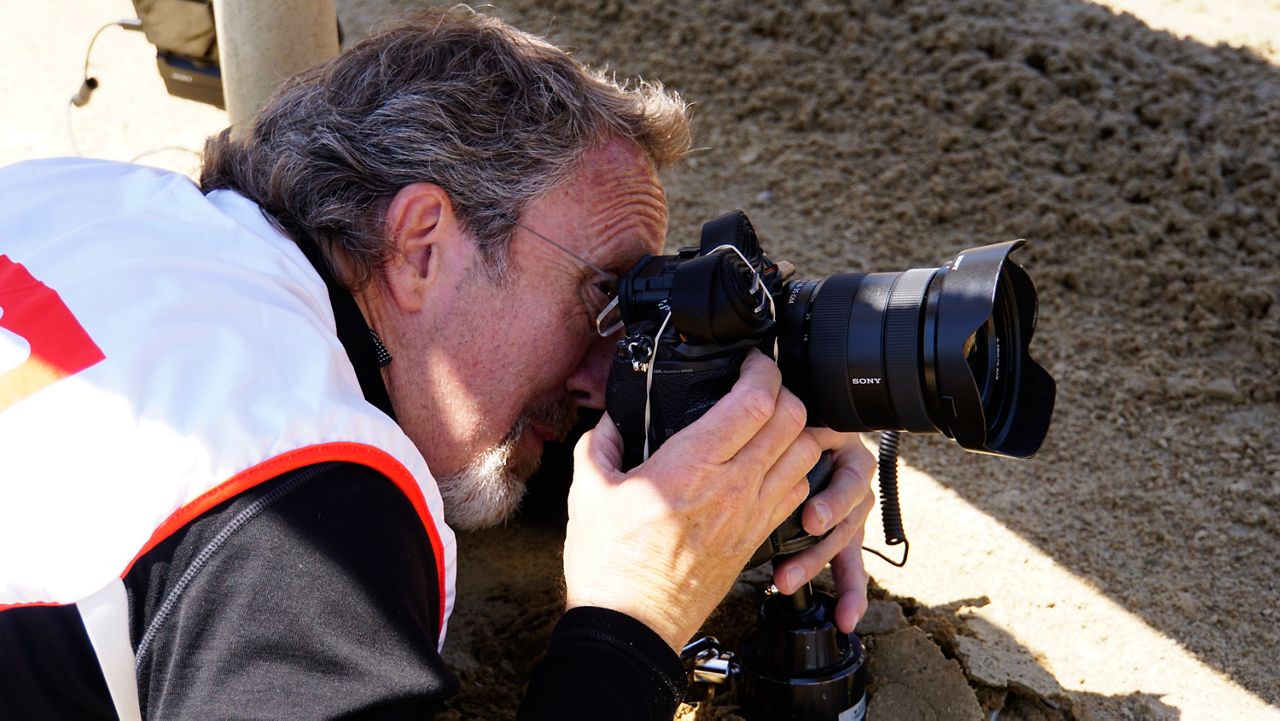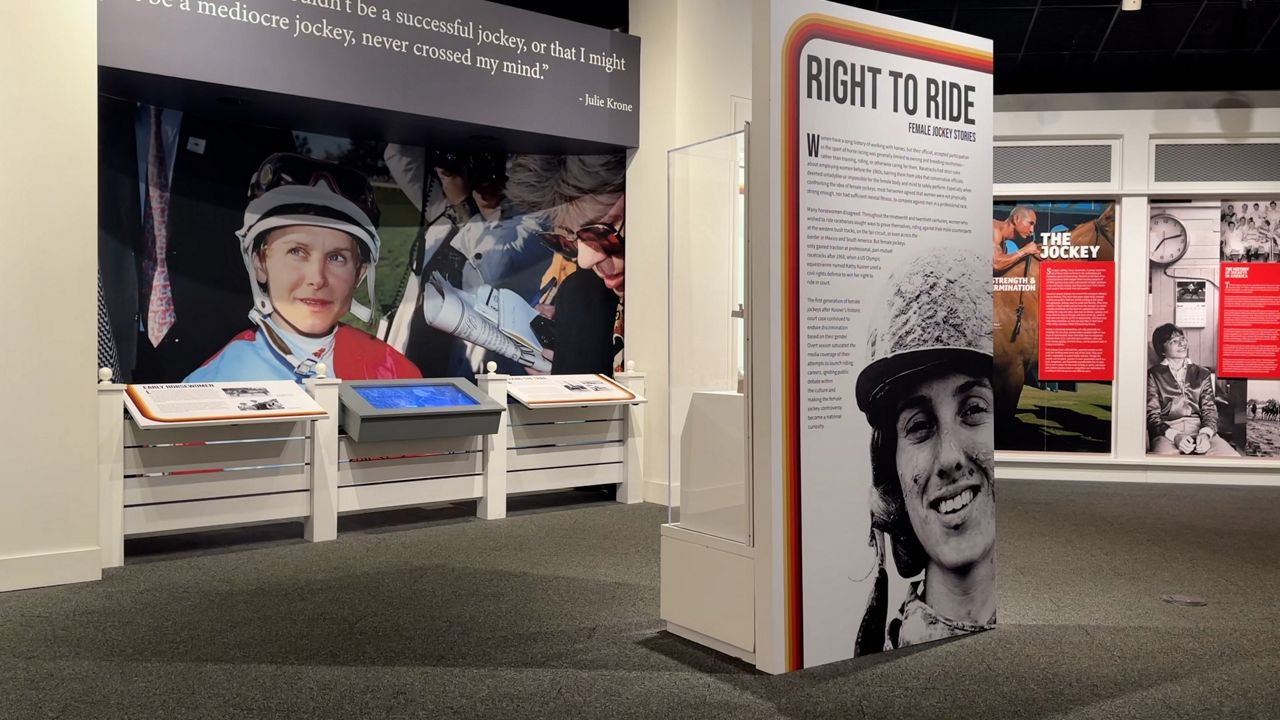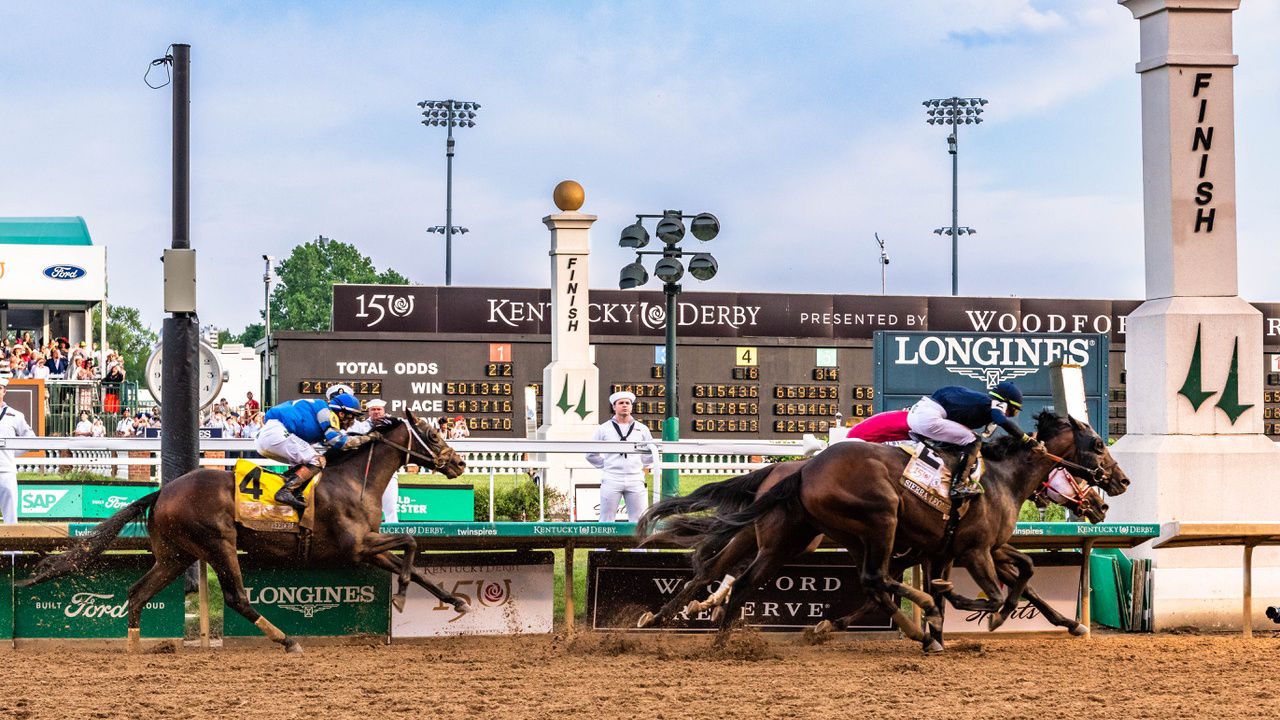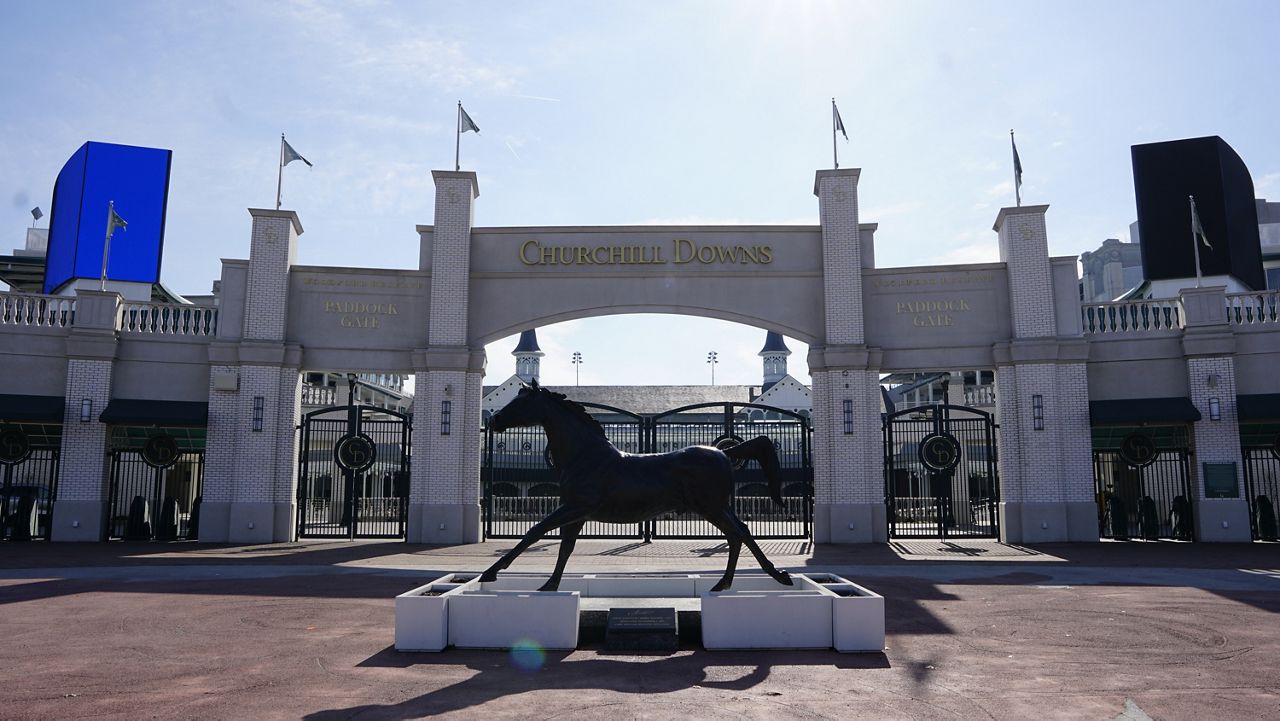LOUISVILLE, Ky. — The iconic photographs of the Kentucky Derby, capturing fractions of a second during the greatest two minutes in sports, often come from Louisville’s Courier-Journal staff and volunteer photographers.
The Courier-Journal and the Kentucky Derby have been intertwined since horses first started racing at Churchill Downs. In fact, one of the most iconic photos from a race was shot in 1933 by a Courier-Journal photographer.

“Wallace Lowry has told me a complete story in this one photograph and it’s, to me, easily the best horse racing photograph ever, possibly one of the best sports photographs ever,” said Michael Clevenger, director of photography at the Courier-Journal.
To get the photo, Cleavenger explained, Lowry laid under the rail with his camera. Unlike the gear used today, Lowry had just one shot to get it right.
“And he nailed this picture,” said Clevenger.
90 years later, the team at the Courier-Journal is still capturing the iconic race, hoping to capture a photo as iconic as “Fighting Finish.” To do this, Clevenger and his team set up around 20 cameras along the inside of the track on Oaks Day. Each one has to be fine-tuned to be in the exact right spot for the race.
Clevenger said it’s a lot like gambling.
“You have sure things and you have long shots and you’re just hoping that something that you’re doing out there is going to be as good as what Wallace did in 1933,” he said.
The day before Derby, 17 members of Clevenger’s teams began setting up.
“You want to get every race right, even your test race. Once you get that test race down, you feel like you got the cameras ready to go and you just kind of leave them alone. You don’t touch them for the rest of the day because all you can do is mess it up,” he shared.
The paper’s team will remotely trigger these cameras. They’re not allowed close to or under the rail like in the 30s.
“We’re pretty much just laying on the accelerator and letting it fire,” explained one volunteer photographer.
These are the kinds of photos this team shoots, a feat not possible without dedicated volunteers who come out each year for Oaks and Derby.
“This one’s kind of wild because it’s like the best seat in the house and you’re right on top of the action and so you know I wouldn’t trade it for being over there for anything,” shared another volunteer photographer.
Throughout Friday, Clevenger is constantly checking to make sure everything is ready to go for the big race, doing his best to capture the most photogenic two minutes in sports.









